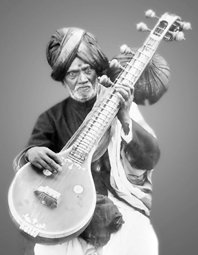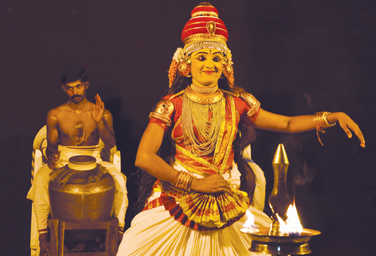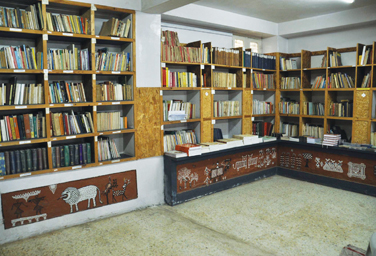COVER STORY - VEENA SHAMANNA (1828-1908) by V.S. Sampathkumaracharya and K.R. Mohan

A major centre of music, Mysore has given its name to one of the four important veena styles in south India. Similar to the gharanas of Hindustani music, these four styles – Tanjavur, Mysore, Kerala (Tiruvananthapuram) and Andhra (Bobbili-Vizianagaram) – evolved in the four major centres where vainikas converged under royal patronage.
Though Mysore has had many illustrious artists for several centuries, authentic and historical documents about them are hardly available. Among the few exceptions is Veena Shamanna, whose successors have preserved the family heirlooms, artefacts and information in good condition, though Veena Shamanna did not receive the publicity he richly deserved.
Birth and music training
Shamanna’s earliest known ancestor was a certain Bhagavatar (circa 1745 AD) who had two sons – Rama Bhagavatar (a Tanjavur Asthana Vidwan) and Lakshmana Bhagavatar. Around 1846, when Tanjavur and surrounding districts suffered a severe drought, Rama Bhagavatar sold his lands, and along with his brother, migrated to Gobichettipalayam of Coimbatore district in Tamil Nadu, and then on to Chikkade village of Pandavapura Taluk in Mandya district, Karnataka. Rama Bhagavatar came to Mysore seeking royal patronage. Enthralled by his music, Maharaja Mummadi Krishnaraja Wodeyar (1794-1868) offered him a respectable position in the palace. His job was to render musical service at the Kote Varahaswamy and Trinayaneswara temples in the palace premises on important occasions. Rama Bhagavatar was blessed with the birth of Shamanna in 1828, reportedly after he prayed to Lord Kandaswamy of Kalipatti village in Salem district. As the child’s complexion was dark, he came to be called Shamanna, syamala meaning dark, though his name was Venkata Subramanya Iyer.
REAR WINDOW - Music for the gods! by Seetha Ravi

You wake up to music just before dawn. The rich boom of a conch being blown chases away the sleep from your eyes and your head. Our genial host is performing the morning puja. The fragrance of fresh sandal paste and incense wafts out along with a gentle chant of unfamiliar slokas. In a while, Satyanarayana and his wife Kusuma will get busy with a jug of steaming hot coffee. The coffee is home-grown and the milk fresh too. Our group of twelve which includes music teacher Akhila Siva, her students and friends will soon be drenched in smiles, love and hospitality.
But before that happens, you choose to sneak out for a walk. The Bangalore-Mangalore highway wears a mild mist. You cross over to the other side and walk down a muddy slope. Tall trees of jackfruit and bowers of cashew grow amidst wild clumps of rain forest. Here and there, trees have been cleared for rubber and cocoa. The tiled houses slowly rise with the sun. A dog barks briskly and a child caught eating toothpaste, smiles sheepishly at you from her backyard. A few yards away, an emerald aviary beckons. You listen with a lump in your throat as bulbuls, ioras, magpie robins, thrushes and many other birds you cannot identify, create a symphony of fluty, cheerful and stirring calls from their leafy perches.
INITIATIVES - Pioneering work-Koodiyattam Kendra by Aasish Venugopal

Kutiyattam – also spelt as Koodiyattam – is an ancient art tradition of Kerala. It started gaining global attention in 1980, when the Kerala Kalamandalam, under the leadership of the late Guru Paimkulam Rama Chakyar, presented it abroad – in Poland and France – for the first time, thanks to the efforts of Sanskrit scholar Christopher Briski.
When UNESCO recognised it in 2001 as a ‘masterpiece of the oral and intangible heritage of humanity’, global interest towards the art widened. However, even in the fully literate state of Kerala that preserved the art for centuries, very few people are attracted towards Koodiyattam (and its other two related forms, Nangiar Koothu and Chakyar Koothu) because of the complexities involved in its appreciation.
Paimkulam Rama Chakyar (Chakyar Koothu in 1948 and Koodiyattam in 1956) brought the art form out of the confines of temples, where it was a part of the rituals. Inspiration came from former education minister of Kerala and literary critic Prof. Joseph Mundassery and a few others.
INSTITUTION - ANANYA: Dedicated to the arts by K.S. Nagarajan

Seventeen years ago, when Dr. R.V. Raghavendra and Dr. Pramila Bai, a husband and wife team of metallurgists and founders of the Geological & Metallurgical Laboratory (GML), built a house at Malleswaram, Bangalore, Dr. Raghavendra decided to use most of the basement parking space in the house for a mini-auditorium that could accommodate an audience of up to 120. Since then the basement auditorium – with enlarged photographic prints and sketches of veteran musicians and performing arts personalities on its walls – has become a popular venue for a variety of music programmes, many of them novel in concept, and Ananya the institution behind it famous among music-lovers in Bangalore.
Ananya is unique. It charges no fee or subscription for the concerts it conducts, though membership by subscription entitles members to the use of its enviable library of books related to music and dance and its sizeable collection of audio recordings, VCDs and DVDs.


